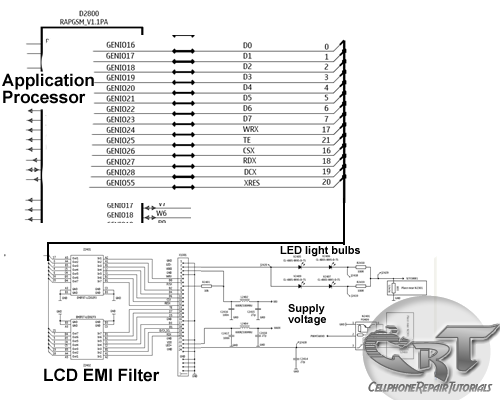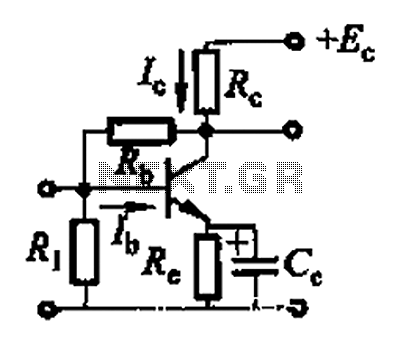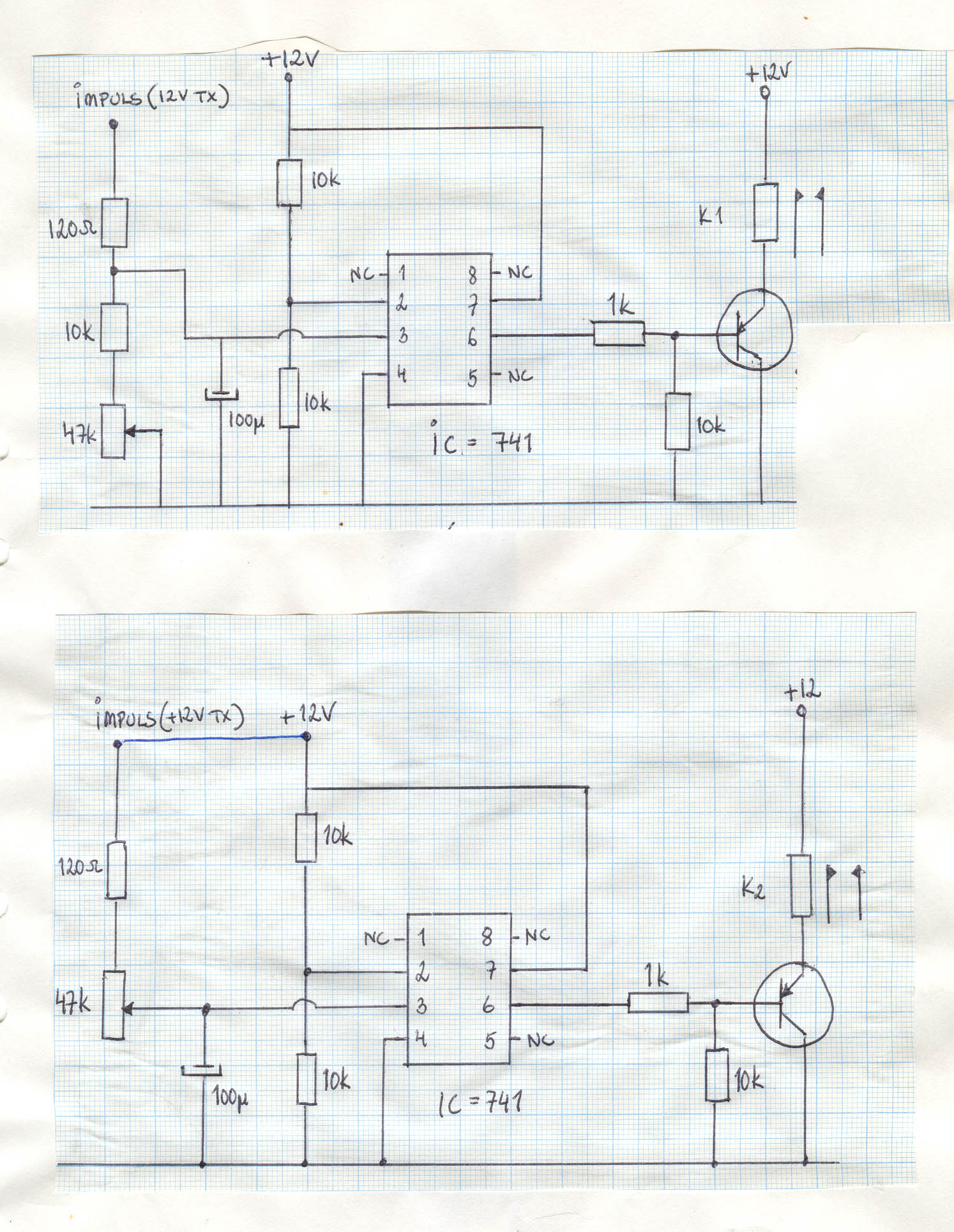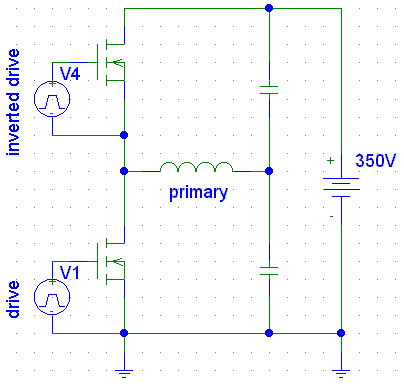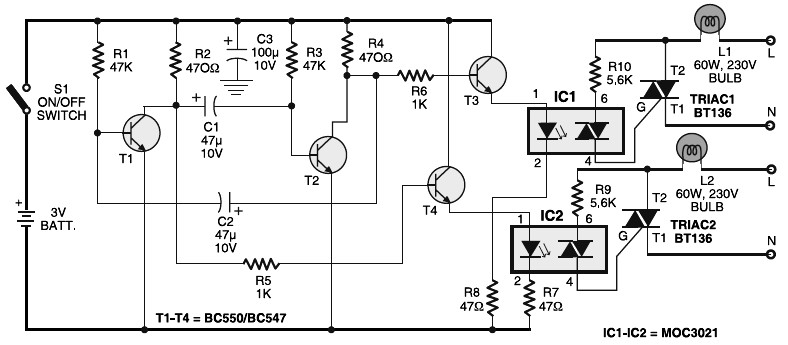
TA8210AH - 2 x 22W BTL Car Amplifier Circuit
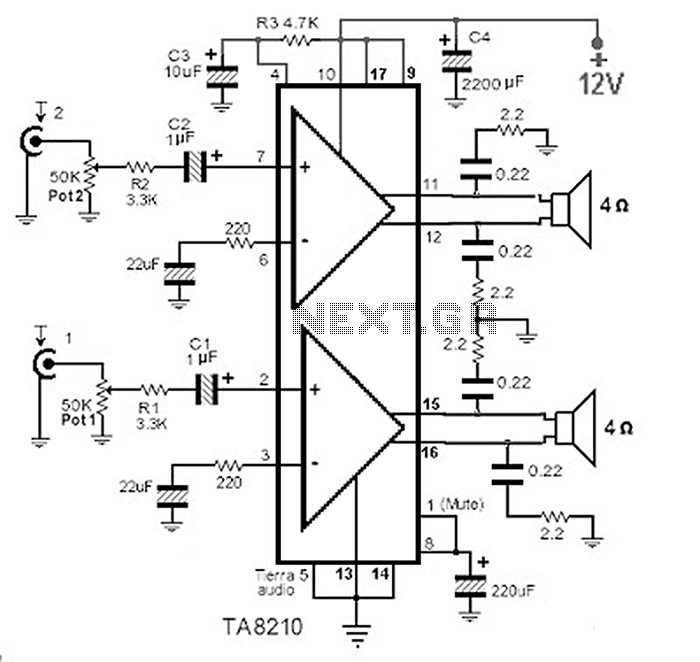
This circuit consists of a 2 x 22 watt BTL amplifier utilizing the IC TA8210AH. It functions not only as an automobile amplifier but is also suitable for low-frequency sound applications, particularly in high-fidelity audio systems, due to its excellent linear characteristics. It can be powered by a 12-volt car battery or a 12-volt charger. The chip features four bridge amplifiers arranged in pairs to deliver an output of 22 watts per channel at a 4-ohm load.
The TA8210AH is a powerful integrated circuit designed for audio amplification, particularly in automotive and portable applications. The BTL (Bridge-Tied Load) configuration allows for higher output power while maintaining a compact design. In this circuit, two channels are utilized, each capable of delivering 22 watts to a 4-ohm speaker, making it suitable for driving speakers in various audio environments.
The circuit typically includes input and output connections, power supply filtering, and bypass capacitors to ensure stable operation. The power supply should be capable of delivering sufficient current to meet the demands of the amplifier, especially during dynamic audio peaks. It is essential to use a regulated 12-volt supply to avoid fluctuations that could affect performance.
In addition, thermal management is a crucial aspect of the design. The TA8210AH may require a heatsink to dissipate heat generated during operation, particularly at higher output levels. Proper layout and grounding techniques should be employed to minimize noise and interference, ensuring high-quality audio reproduction.
Overall, this amplifier circuit is an effective solution for those seeking a compact, efficient, and high-performance audio amplification system suitable for both automotive and stationary applications.This is a circuit of 2 x 22 watt BTL amplifier using IC TA8210AH. It is not only an auto amplifier, ideal for a low-frequency auditory approach those hi-fi, with a very good linear feature. Can be fueled by a 12 volt car battery but shi from a 12 volt charger. The chip incorporates four bridge amplifiers available in two by two in order to ensure the output 22 watts per channel on 4 ohms. 🔗 External reference
The TA8210AH is a powerful integrated circuit designed for audio amplification, particularly in automotive and portable applications. The BTL (Bridge-Tied Load) configuration allows for higher output power while maintaining a compact design. In this circuit, two channels are utilized, each capable of delivering 22 watts to a 4-ohm speaker, making it suitable for driving speakers in various audio environments.
The circuit typically includes input and output connections, power supply filtering, and bypass capacitors to ensure stable operation. The power supply should be capable of delivering sufficient current to meet the demands of the amplifier, especially during dynamic audio peaks. It is essential to use a regulated 12-volt supply to avoid fluctuations that could affect performance.
In addition, thermal management is a crucial aspect of the design. The TA8210AH may require a heatsink to dissipate heat generated during operation, particularly at higher output levels. Proper layout and grounding techniques should be employed to minimize noise and interference, ensuring high-quality audio reproduction.
Overall, this amplifier circuit is an effective solution for those seeking a compact, efficient, and high-performance audio amplification system suitable for both automotive and stationary applications.This is a circuit of 2 x 22 watt BTL amplifier using IC TA8210AH. It is not only an auto amplifier, ideal for a low-frequency auditory approach those hi-fi, with a very good linear feature. Can be fueled by a 12 volt car battery but shi from a 12 volt charger. The chip incorporates four bridge amplifiers available in two by two in order to ensure the output 22 watts per channel on 4 ohms. 🔗 External reference
